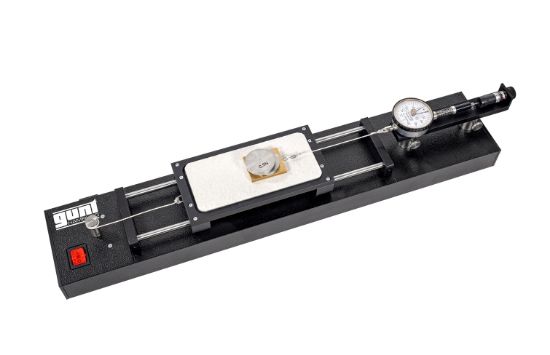Friction is a key factor in mechanical engineering. Static friction needs to be adequate to fix components to each other, such as parking brakes, self-locking threads and frictionally engaged connections. Dynamic friction needs to be kept as low as possible, such as on bearings, in guideways or in shaping tools. Consequently, great attention is paid to the topic in engineering mechanics, and understanding of it is enhanced by clearly laid-out experiments.
TM 210 provides a broad range of experiments relating to static and dynamic friction between solid bodies which are in contact with each other and moving relative to each other. Various influences on friction can be investigated, such as surface properties and material pairing.
A friction plate slides beneath the stationary friction body. The friction plate is held in a carriage which is drawn along by a motor at uniform velocity by a motor.
The friction body is connected to a height-adjustable force measuring unit. This ensures that the lines of action of friction force and tensile force are parallel. The force measuring unit is essentially a force gauge which is fitted with an air damper to compensate as far as possible for slip/stick effects and so indicate a mean friction force (with no spiking).
Three friction plates and two friction bodies are available. The normal force can be varied by adding weights.
Experiments can be performed at two constant velocities. The air damping is adjustable. When it is inactive, slip/stick effects can also be observed.
All parts are clearly laid out and well protected on a storage system.

